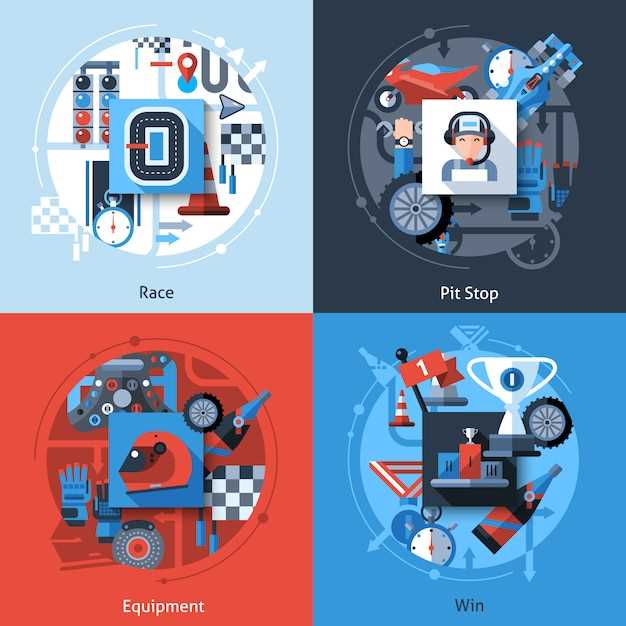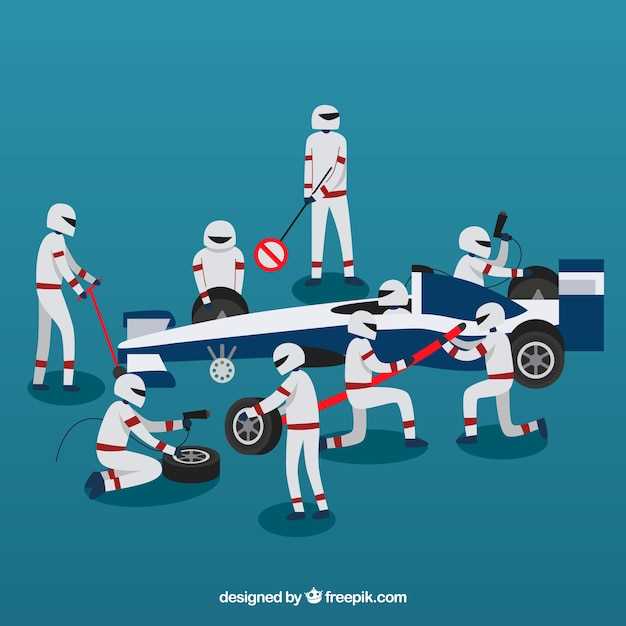
In the competitive world of racing, mastering the art of cornering is paramount to achieving success on the track. The apex of a turn is where speed can be maximized, and understanding how to navigate it effectively can make the difference between a win and second place. This article delves into the critical techniques that drivers must employ to master cornering, allowing them to harness the full potential of their vehicles.
The key to successful cornering lies in several fundamental factors, including approach speed, steering precision, and throttle control. By learning how to properly identify and utilize the apex point of each corner, racers can optimize their trajectory, reducing lap times and improving overall performance. Every millisecond counts, and knowing how and when to accelerate or decelerate through a turn is essential for any serious competitor.
Moreover, understanding the physics behind cornering can elevate a driver from a novice to an expert. Factors such as weight transfer, tire grip, and track conditions all play a crucial role in determining the best racing line through a corner. This article will explore the techniques and strategies that not only enhance cornering skills but also build a deeper understanding of the dynamics at play during high-speed racing.
Understanding the Perfect Apex Position for Optimal Speed

The apex is a critical point in racing that determines the speed and trajectory of a car through a corner. Achieving the ideal apex position involves precise timing and placement to maximize acceleration and maintain control. Understanding how to find the perfect apex can significantly enhance lap times and overall racing performance.
To determine the perfect apex, drivers should focus on three main factors: entry speed, turning angle, and exit speed. Entering the corner at the right speed sets the stage for a smooth transition to the apex. A slower entry can lead to a better apex position, allowing for a faster exit. However, entering too slowly can also negatively impact momentum.
The apex is usually located at the innermost point of a corner. However, the ideal position may vary depending on the track layout and car characteristics. Drivers must adapt their line to suit different corner types, whether it be a hairpin, sweeping bend, or chicane. The traditional racing line often suggests hitting the apex early, but some corners may require a later apex to ensure better acceleration out of the turn.
During cornering, drivers should aim to maintain a balanced weight distribution over the car. Too much weight on the front can lead to understeer, while excess rear weight can cause oversteer. Finding a harmonious balance allows for sharper turning and better control at the apex. Additionally, utilizing proper steering inputs is essential; smooth and gradual movements help maintain stability and enhance grip.
As a driver approaches the apex, the focus shifts to the exit. Positioning the car correctly at the apex will facilitate a faster and more controlled exit. A well-executed apex will allow for gradual application of the throttle, leading to optimal speed down the following straight. This combination of maintaining momentum and maximizing traction is where the true advantage lies.
In summary, mastering the perfect apex position requires a blend of technique, understanding of vehicle dynamics, and adaptability to different track conditions. By focusing on entry speed, turning angle, and a well-timed exit, drivers can unlock their true potential on the track, ensuring competitive lap times and racing success.
Executing Smooth Cornering with Precision and Control

Mastering the art of cornering is essential for achieving success in racing. Smooth cornering not only enhances speed but also ensures stability through the bends. To execute effective cornering, focus on several key techniques that contribute to precision and control.
First, approaching the corner requires proper speed management. Reduce your speed before entering the turn to allow for a more stable line. This can be achieved through braking effectively, ensuring you shift your weight forward to maintain traction.
Next, as you initiate the turn, aim for the apex of the corner. Position your vehicle close to the inside of the track at the apex to minimize the distance traveled. This strategy increases your exit speed, giving you a competitive edge as you exit the corner.
Applying the throttle smoothly while exiting is crucial. Gradually increasing acceleration as you leave the corner helps maintain control and prevents loss of grip. Balancing throttle application with steering input ensures the car remains planted and responsive.
Additionally, visual perception plays a crucial role in cornering technique. Focus your gaze ahead, anticipating the trajectory through the corner. This helps you adjust your steering and throttle inputs promptly, leading to a more fluid cornering experience.
Lastly, practice is vital. Repeatedly executing cornering techniques in various conditions helps build muscle memory and confidence. Assess each corner in terms of entry, apex, and exit to refine your skills continually.
Analyzing Track Layouts to Identify Ideal Apex Strategies
Understanding track layouts is crucial for developing effective apex strategies in racing. The apex is the point in a corner where a driver aims to achieve the fastest trajectory. By analyzing the layout of a track, racers can determine the optimal points to turn in, apex, and exit, ensuring maximum speed while maintaining control.
To start, one should examine the type and configuration of corners present on the track. Corners can range from hairpins to sweepers, each requiring different approaches to cornering. For tight corners, an early turn-in to the apex may be beneficial. This allows for better acceleration out of the corner, reducing time spent on the track. Conversely, for wider corners, a later apex might permit a more aggressive acceleration out of the turn, maximizing speed throughout the exit phase.
Next, consider the camber of the road. Positive camber can influence apex strategies significantly, providing additional grip when approaching and exiting corners. In contrast, negative camber may require adjustments to braking points and turn-in angles, as it can affect the car’s behavior during cornering. Understanding these elements can lead to smarter apex decisions tailored to the specificities of the track.
In addition to physical features, observing previous race data can yield valuable insights. Analyzing the performance of other drivers at different cornering points can help identify successful apex techniques. Data such as entry speed, apex speed, and exit speed provide an understanding of how to balance throttle control and braking effectively.
Finally, incorporating simulation tools can enhance the analysis of track layouts. These tools allow racers to visualize various cornering scenarios, adjust their driving techniques, and test different apex strategies without the risk of crashing. By simulating different approaches to corners, drivers can find the optimal apex that maximizes their performance while minimizing tire wear and maintaining vehicle stability.
In conclusion, thorough analysis of track layouts is essential for identifying the ideal apex strategies. By considering corner types, road camber, historical data, and utilizing simulation technology, racers can enhance their cornering techniques and achieve greater success on the track.



